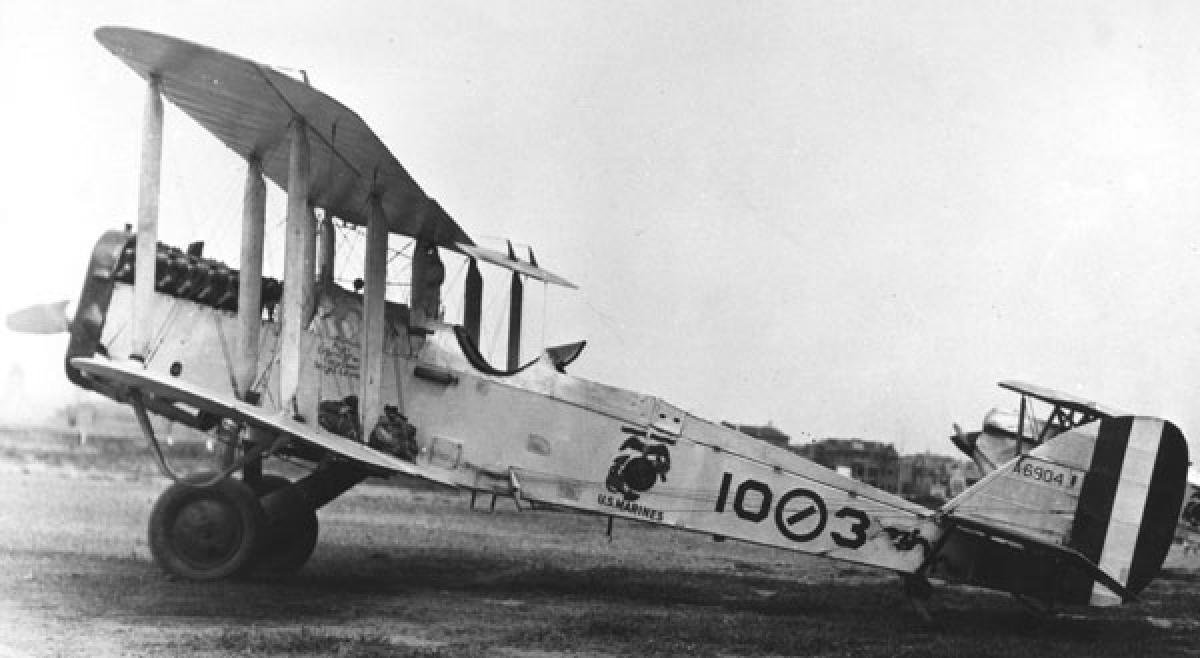A Marine’s Short War in France
In the autumn of 1969, when the Naval Institute’s oral history program had just gotten started, John T. Mason Jr., the director, sat down for an interview at the Army-Navy Club in Washington. His interviewee was a distinguished elder statesman, Colgate W. Darden Jr., then president emeritus of the University of Virginia. During World War II, he had been governor of Virginia, and before that he was a member of the House Naval Affairs Committee as it dramatically built up the Navy’s strength prior to the war.
The two men sat together to discuss a period much earlier in Darden’s life, his service in World War I. In 1969 there was widespread unrest on U.S. college campuses because of opposition to the Vietnam War. The spirit was much different in 1916, when the idealistic 19-year-old Darden and three friends dropped out of the University of Virginia and volunteered their services to the French Army. He became an ambulance driver, evacuating wounded French soldiers in the area around Verdun. Darden and his compatriots drove at night—without headlights—because daytime driving would have subjected them to German artillery fire.
After the United States entered the war, Darden came home and enlisted in the Naval Reserve Force. He went through aviation ground school in Massachusetts and flight training in Florida. Naval aviation was still so new that a number of the instructors were civilians hired by the Navy. Airplanes were stowed in tents rather than hangars, and the planes—the Curtiss-built N-9 and R-6—were equipped with pontoons rather than wheels. After only about a dozen hours of training with an instructor in the plane, recalled Darden, he was cleared to solo.
In the spring of 1918, Major Alfred Cunningham made a recruiting visit to Pensacola. He was naval aviator number five and the first Marine to train in aviation. He asked for volunteers to join his service, explaining that the Marine Corps was planning to set up squadrons of land planes to support its ground troops in the war. Darden succumbed to the appeal because of the promise of being commissioned more quickly than he would have been in the Navy, and the assurance of being sent immediately to France. Another reason was that the Navy’s large H-16 flying boat was considered cumbersome, and in a crash its engines were likely to slide into the pilot and kill him. The Marines’ land planes, by contrast, were faster and more maneuverable.
During the Marine training in Florida, those in land planes ventured out as far as the coastline but weren’t allowed to go over water—too risky without pontoons. The training included practice with both bombs and machine guns. Soon, Darden was in a squadron that went overseas as part of the First Marine Aviation Force. He arrived in France in the late summer of 1918. His outfit was scheduled to be equipped with DeHavilland DH-4 biplanes that were designated as daytime fighter-bombers.
The squadron set up shop near Dunkirk and Calais, but it encountered a delay in getting bombs and planes. As the squadron waited for its equipment, skipper Major Roy Geiger turned the eager young pilots over to a senior sergeant. The sergeant had a low opinion of the young reservists and thus made a practice of getting them out of their tents early each day to run them around, though there was no compelling duty involved.
Finally, in the autumn, the squadron got its aircraft. On 14 October, Second Lieutenant Ralph Talbot earned the Medal of Honor for his exceptional performance against German aircraft during a strike on an enemy ammunition dump in Belgium. Eleven days later, Talbot got his plane out of a shop after it had been shot up and repaired. He asked Darden, a friend, to come along and sit in the rear gunner’s seat during a test flight. The plane’s engine wasn’t tuned well.
After one aborted takeoff attempt in the DH-4, Talbot taxied and had barely gotten off the runway when the landing gear struck a mound of earth next to a bomb-storage pit at the end of the field. He had evidently forgotten about the obstacle, and the results were catastrophic. The plane upended, crashed into the pit, and caught fire. Talbot was killed. Darden, who had not fastened his seat belt, was hurled forward by the plane’s momentum. He was launched horizontally, as if fired from a slingshot, and landed more than 100 feet away in a wheat field. Had he been strapped in, he would have been incinerated. As it was, he was grievously injured. The right side of his face was crushed, the upper part of his spine was dislocated, and he was temporarily paralyzed. On his left leg, the flesh was laid open to the bone.
The Armistice came on 11 November. As Darden recounted more than 50 years later to Mason, “I don’t reckon anybody ever made a more modest contribution to the First World War than I made.” He began a long period of recuperation and then set out on the productive career in government and academia that defined his life. Representative Darden was a member of the Congress that in 1934 authorized dozens of new destroyers. One of them became the USS Ralph Talbot (DD-390), which supported Marine landings in the Pacific theater throughout World War II.




